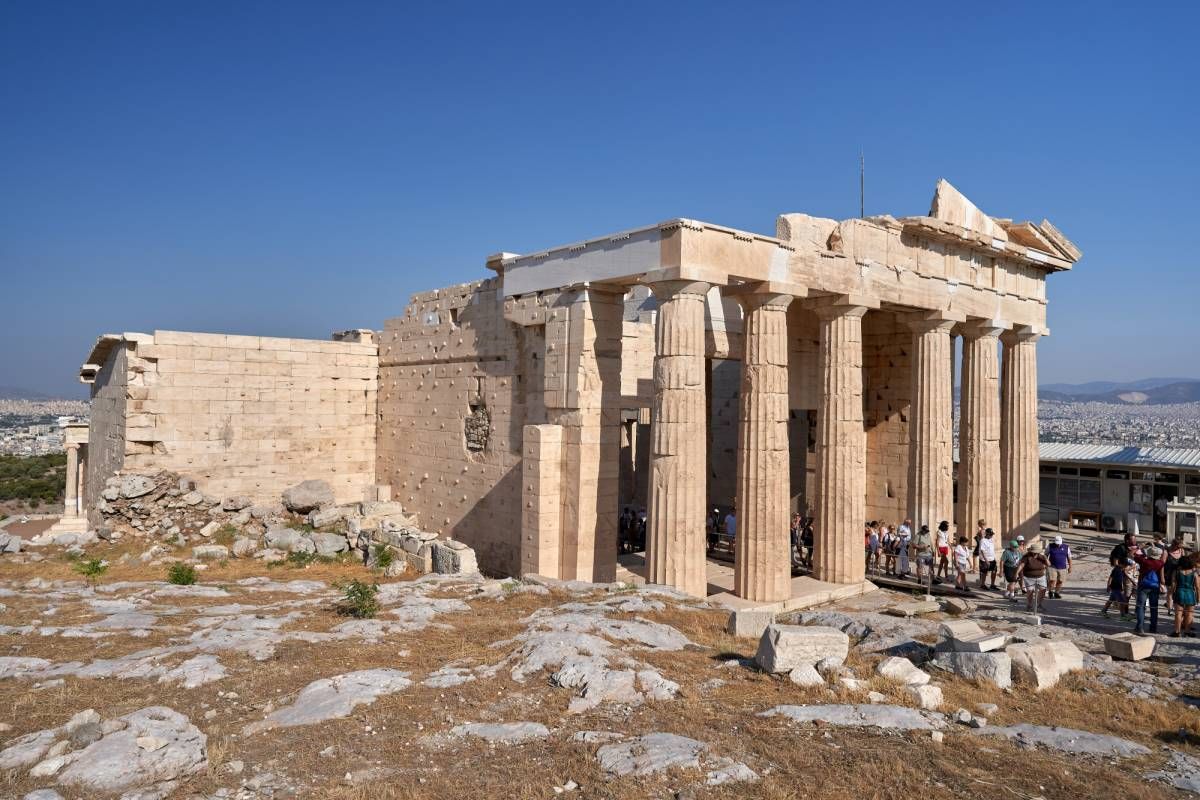The Propylea in Athens

Propylaea is the entrance to the sacred rock designed by the architect Mnesicles. Its construction lasted from 437 to 432 BC to be interrupted by the out break of the Peloponnesian War (431 BC). In the Antiquity there were five entrances between the six columns that you see before you. You can come in from the middle one, the only one in use today. The Propylaea resembles an ancient temple.
It consists of three wings, the central and the two side ones which are asymmetrical. The central wing, the largest one, has the shape of a Doric six-Column temple. A wall, with five gates, divides the building into two halls. The outer, western hall is the larger one. This is the Propylaea proper. This hall includes six interior columns of ionic order. As a consequence, the Propylaea combines, like other buildings of the Acropolis, the Doric with Ionic order. So aesthetically speaking, there is a balance between the two orders. At the same time the Acropolis assumes a Panhellenic character, since the two orders come from different areas of the Hellenic world, which correspond to different Hellenic Tribes.
Pinacotheke
The north wing of the Propylaea is called today the “Pinacotheke” (Gallery) because, as Pausanias informs us, they used to display paintings there during the Roman Period. At the Propylaea there are were many votive offerings. You can see them, in front of the Gallery, the pedestal of the monument of Agrippa, dedicated in memory of Agrippa, son-in-law of the Roman Emperor Augustus, who built the Odeum with the same name at the Agora in the 1st century BC.